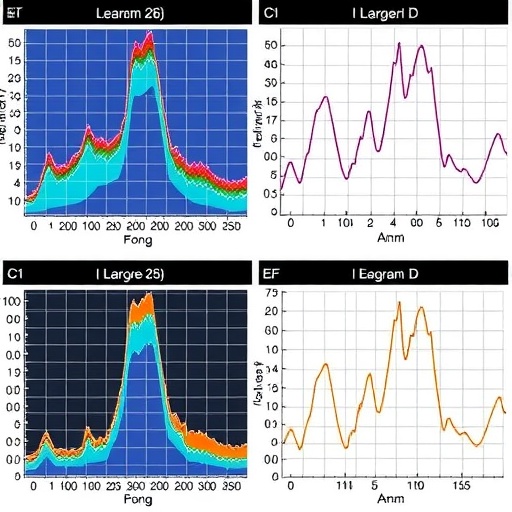In a groundbreaking study, researchers are advancing the field of critical care medicine with the introduction of innovative nomograms designed to predict outcomes for patients undergoing venoarterial extracorporeal membrane oxygenation (VA-ECMO) treatment for septic shock. Septic shock remains one of the most severe complications of infections, often leading to multiple organ failure and significant mortality rates. The ability to forecast patient outcomes in such dire circumstances could dramatically improve treatment strategies and patient management, and ultimately save lives.
The development of nomograms, which are graphical calculating tools that enable the evaluation of complex clinical data, marks a significant leap forward in the assessment of patients receiving VA-ECMO. These patients are typically at the highest risk, requiring advanced support systems due to inadequate circulation and oxygenation. By calculating predicted outcomes using various clinical parameters, healthcare providers could tailor treatment plans to the individual needs of their patients, optimizing the chances of recovery.
The study led by Hu and colleagues systematically examined a demographic that has historically posed challenges in prognostication—the septic shock patient population. With VA-ECMO functioning as a life-sustaining treatment that supports heart and lung functions during acute respiratory and cardiac failure, understanding which factors contribute to successful outcomes is paramount. The researchers focused on key variables, including demographic data, clinical scores, laboratory results, and the duration of ECMO support, in constructing their nomograms.
Through this meticulous approach, the researchers were able to identify critical predictors of patient survival. Their findings suggest that certain laboratory values—such as lactate levels, white blood cell counts, and markers of organ function—significantly influence outcomes. For clinicians, integrating these variables into a user-friendly nomogram format enhances the ability to make informed decisions quickly. This is particularly crucial in high-pressure environments like emergency departments and intensive care units, where time is often of the essence.
As part of the study, the researchers validated their nomograms using a large cohort of patients. This not only provides reassurance regarding the accuracy of their predictions but also emphasizes the potential for widespread adoption in clinical settings across diverse healthcare systems. The user-friendly nature of nomograms means that they can easily be incorporated into electronic health records, streamlining the clinicians’ workflow and increasing the likelihood of their usage in practice.
One key aspect of the research involves the significant variability in outcomes observed among patients with septic shock on VA-ECMO. Some patients achieve remarkable recoveries, while others continue to face significant challenges. The nomograms serve as essential guides, helping delineate those who may benefit most from aggressive treatments and interventions. This tailored approach aligns with a broader trend in medicine towards personalized care, reflecting the unique needs and circumstances of each patient.
Moreover, the implications of this study extend beyond immediate clinical practice. By providing a clearer framework for understanding patient outcomes, the research has the potential to influence future clinical trials and studies. Understanding which parameters best predict outcomes could help identify the most at-risk patient populations and improve recruitment strategies for clinical trials aimed at enhancing VA-ECMO protocols.
In addition to improving patient management and resource allocation, the deployment of VA-ECMO nomograms could contribute to enhancing epidemiological data on septic shock outcomes. Accurate predictions of survivorship can inform public health initiatives, guiding investment in preventive measures and research funding to explore innovative treatment protocols. This holistic view underscores the critical intersection of clinical data and public health impacts, particularly in resource-limited settings where the burden of septic shock remains disproportionately high.
The nomograms are not merely a theoretical exercise; they have practical applications that enhance the landscape of critical care medicine. As the healthcare community increasingly embraces data-driven approaches to patient care, the introduction of tools such as nomograms signifies a transformative shift in clinical decision-making processes. These empirical resources not only bolster clinicians’ capabilities but also foster deeper patient engagement, as informed patients become more involved in their treatment plans when presented with data-driven insights.
In a world facing rising sepsis rates and challenging healthcare landscapes, innovation in treatment and prediction methodologies like those brought forth by Hu et al. could mark the beginning of a new era in understanding and managing septic shock. The potential for improved outcomes, more informed clinical decision-making, and tailored treatment approaches represent essential advancements that can reshape the conversations around critical care management.
Future research will likely focus on refining these nomograms further, integrating advanced technological solutions such as machine learning algorithms that could enhance predictive accuracy even more. The evolving landscape of artificial intelligence in healthcare is rapidly paving the way for smarter, more responsive healthcare systems that prioritize patient outcomes and safety. As the medical community continues to adapt to these innovations, the emphasis will undoubtedly be on harnessing the wealth of data at our disposal to create actionable insights that improve patient care.
In conclusion, the study of nomograms for predicting outcomes in patients undergoing VA-ECMO for septic shock is a significant contribution to both clinical practice and patient management. It encapsulates a pivotal step toward integrating complex clinical data into actionable tools, enabling healthcare providers to make informed decisions quickly, improve patient outcomes, and encourage a culture of personalized medicine. As we move forward, continued research and collaboration will be essential in refining these tools and ensuring they meet the evolving needs of patients facing life-threatening conditions.
Subject of Research: Nomograms for predicting outcomes in VA-ECMO treatment for septic shock.
Article Title: Nomograms to predict outcome for patients undergoing venoarterial extracorporeal membrane oxygenation treatment for septic shock.
Article References: Hu, K., Wei, J., Chi, X. et al. Nomograms to predict outcome for patients undergoing venoarterial extracorporeal membrane oxygenation treatment for septic shock. J Artif Organs (2025). https://doi.org/10.1007/s10047-025-01523-w
Image Credits: AI Generated
DOI:
Keywords: Venoarterial Extracorporeal Membrane Oxygenation, Septic Shock, Nomograms, Patient Outcomes, Critical Care Medicine.




